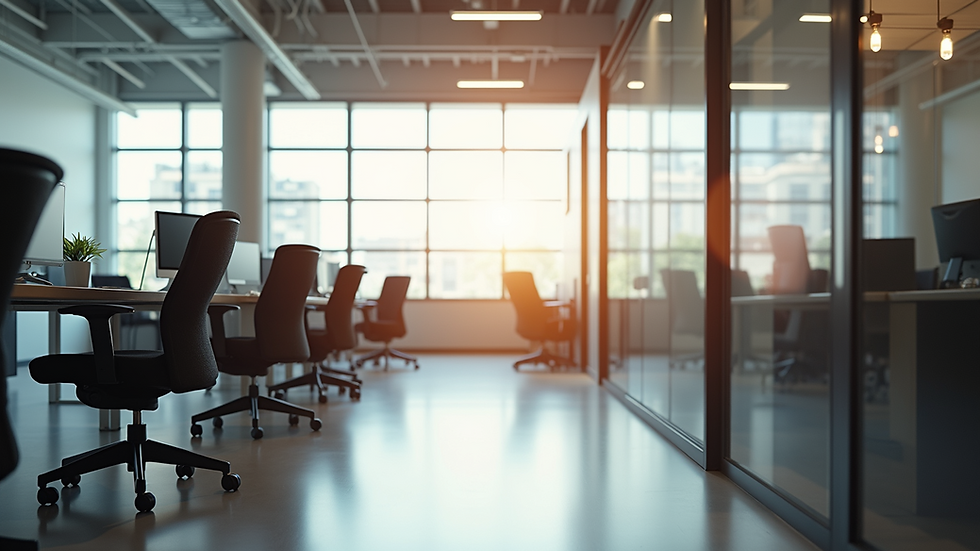Exploring the Subtle Connections Between Interior Design and Human Psychology
- Design Expression

- Jul 3
- 4 min read
Interior design is often mistaken for just beautifying spaces, but it involves much more. It has the power to influence our emotions, behaviors, and overall well-being. By understanding the psychology behind interior design, we can create environments that boost productivity, promote relaxation, and support mental health.
In this post, we will explore how various elements of interior design affect human psychology. We will examine color, layout, texture, and lighting, highlighting their contributions to our emotional experiences in a space.
The Role of Color in Design Psychology
Color is arguably one of the most significant aspects of interior design. Each hue stirs different emotional responses and can greatly affect mood and behavior.
Color and Emotion
Research indicates that colors like blue can evoke calmness and tranquility. A study by the Visual and Behavioral Neuroscience Journal revealed that individuals in rooms painted soft shades of blue reported a 30% increase in relaxation. This makes such colors ideal for spaces meant for unwinding, such as bedrooms or living rooms.
On the other hand, bold colors like red and orange stimulate energy and enthusiasm. These colors can increase heart rates and may even lead to a 20% increase in metabolic rates. This vibrant palette works well in spaces designed for social interactions, such as dining rooms or family areas.
Associations and Cultural Context
Colors carry different meanings across cultures, impacting how we perceive them emotionally. For example, in many Western societies, white symbolizes purity and peace, whereas it can represent mourning in some Eastern cultures. When designing spaces, it’s vital to consider these cultural contexts to align the psychological experience with the users' backgrounds.
The Impact of Space Layout
Flow and Functionality
The layout of a space can profoundly influence how we interact with our surroundings. Open layouts often encourage a sense of freedom and tranquility, ideal for gatherings or collaborative work. In contrast, segmented spaces can enhance focus and privacy, which is especially beneficial in study or meditation areas.
Designers use principles of flow and functionality to create spaces that fulfill their physical purpose while promoting psychological comfort. A well-structured layout can reduce chaos by fostering a sense of control, which is crucial for mental well-being.
The Power of Personalization
Creating a space tailored to individual preferences can significantly enhance emotional connection and satisfaction. Personal touches, such as family photos or meaningful artwork, can help occupants feel more at home. A survey conducted by the American Psychological Association found that personalized environments led to a 40% increase in overall happiness levels.
In contrast, generic or sterile spaces can lead to feelings of disconnection or anxiety. Understanding occupants' personal tastes is essential for developing spaces that support emotional health.
Texture and Sensory Experience
The Influence of Material Choices
The tactile experience of a space plays a critical role in emotional responses. Textures can determine a room’s warmth and comfort. For instance, soft materials like velvet and cotton can create a cozy feeling, while harder materials like stone and metal might have a more grounding or austere effect.
Research from the Journal of Environmental Psychology suggests that rooms featuring varied textures can positively influence mental states, encouraging a more enriching sensory experience.
Creating a Multi-Sensory Environment
Designers are increasingly adopting a multi-sensory approach to create environments that engage all the senses. Incorporating elements such as gentle sounds—like a water feature—and calming scents, such as lavender, can promote relaxation. A study by the American Institute of Stress found that environments featuring pleasant scents can reduce stress levels by up to 25%.
Advancing engagement through sound and smell leads to a deeper connection with the space, fostering well-being and relaxation.
Lighting and Its Psychological Impact
Natural Light vs. Artificial Light
Lighting is a vital component of interior design that directly affects mood and productivity. Natural light, linked to enhanced focus and improved mood, can significantly influence psychological health. Studies show that exposure to natural light can lead to a 15% increase in feelings of happiness.
Conversely, harsh artificial lighting can contribute to fatigue and irritability. This makes it essential to design spaces that maximize natural light and employ warm, soothing light sources.
The Use of Dimmer Switches
Incorporating dimmer switches gives occupants the ability to adjust lighting to match their mood or time of day. Soft, dim lighting can encourage relaxation in the evening, while brighter light can enhance alertness during the day. Strategically using light can empower individuals to shape their environment to meet their psychological needs.
Nature and Incorporation of Green Elements
Biophilic Design Principles
Biophilic design connects people to nature and has gained popularity over the years. Integrating plants, water features, and other natural elements can reduce stress and enhance cognitive functions. In fact, research shows that simply being around plants can improve creativity by 15% and decrease stress levels by 37%.
All these factors suggest that incorporating greenery and natural materials should be a priority in effective interior design.
Outdoor Views and Connection to Nature
Designing spaces with large windows that showcase nature can further reinforce the connection to the outdoors. A study by the University of Illinois found that views of nature from windows could elevate mood by 10-15%.
Creating a seamless transition between indoor and outdoor spaces not only enhances the experience but also nurtures psychological well-being.
Final Thoughts
Understanding the psychology behind interior design empowers us to develop environments that do more than just appeal to the eye. By recognizing how color, layout, texture, lighting, and nature influence our emotions and behaviors, we can create spaces that promote well-being and enhance our quality of life.
As we unpack these connections, it’s evident that thoughtful interior design is a vital step toward healthier living environments. Through calming colors and inviting textures, we can transform our spaces into havens of comfort and tranquility, ultimately enriching our lives and supporting mental wellness.




Comments